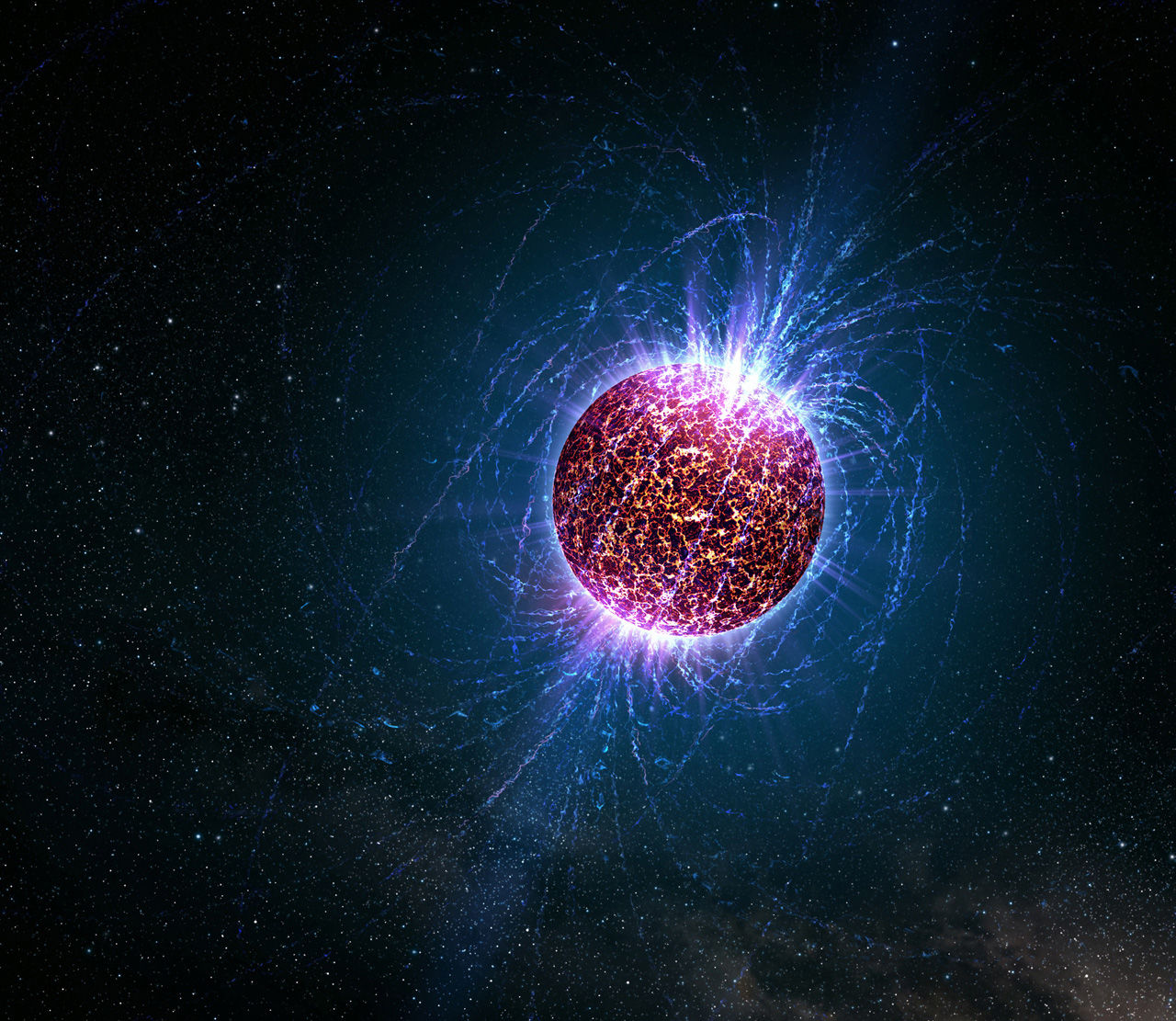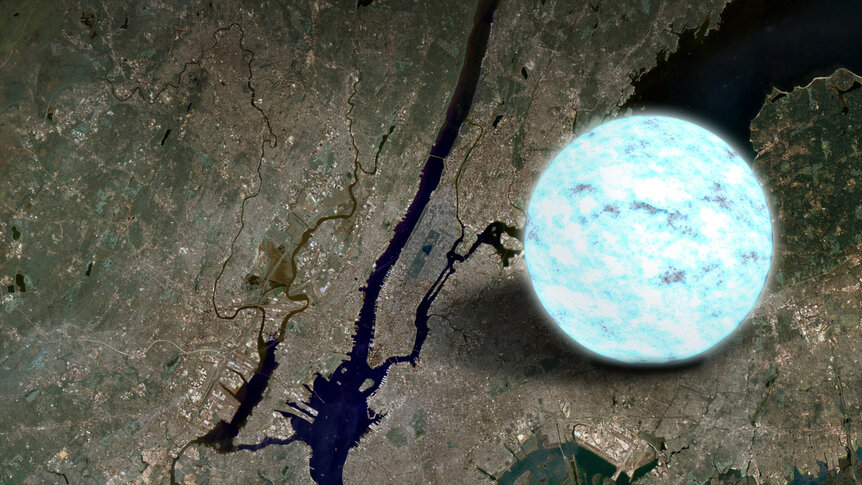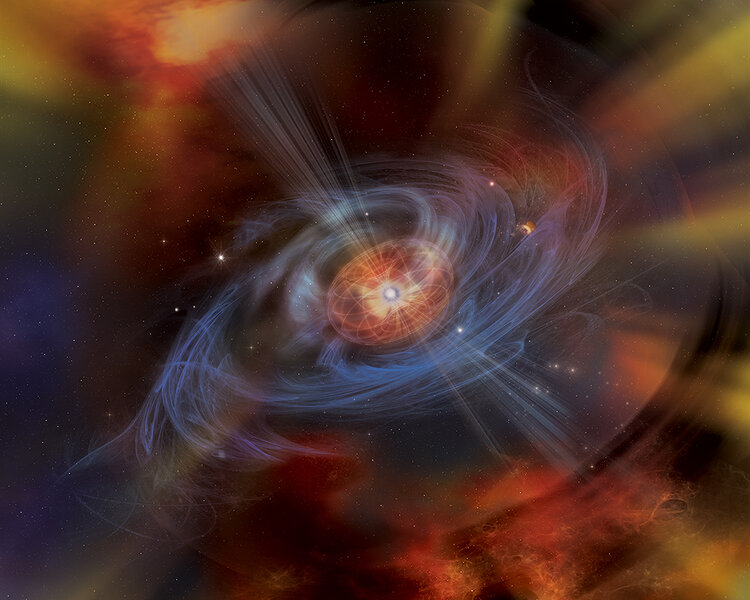Create a free profile to get unlimited access to exclusive videos, sweepstakes, and more!
The tallest mountain on a neutron star may be a fraction of a millimeter tall

The tallest mountain on Earth — measured from its base to its peak — is the volcano Mauna Kea at 10,200 meters (6.3 miles) high.
On a neutron star, the tallest mountain would be a millimeter high. Maybe as much as a centimeter.
That's according to new research done looking at how these tiny but ridiculously powerful objects work. It may seem a little esoteric to wonder how tall a mountain can be on the ultra-compact remnant of a massive star's core, but it turns out to have some pretty important implications for astronomy.
Neutron stars form when stars about 8–20 times the mass of the Sun end their lives. The outer layers of the star explode outward as a supernova, but the core collapses downward. The core starts off hundreds of thousands of kilometers across but contracts down into a sphere less than 30 kilometers wide. All the protons and electrons in the atomic elements in the core (plus antineutrinos, if you're keeping score) combine to form neutrons, creating a neutron star.
They are incredibly, almost unreasonably dense, with as much as a hundred million tons packed into every cubic centimeter of material (called neutronium). This makes their surface gravity crushing, about a billion times that of Earth's.
A billion. On a neutron star I would weigh as much as a small mountain.
But I would be nowhere near as tall. The gravity is so strong that anything that tries to pile up would get smashed flat. That's true on Earth too: Mountains can only get so high before their own weight causes them to slump; the stuff on top pushes down on the stuff below it, which then flows away. That's why tall mountains are made of hard rock. Try making one out of mud and it won't get very tall before it collapses.
This problem is billions of times worse on a neutron star. Another problem is that a mountain needs support by the crust underneath it. The crust of the Earth can only take so much weight before the pressure causes it to deform, limiting the size of mountains as well.
A neutron star has a crust of material as well, and it's far far stronger than Earth's. But with a hundred billion times the downward force even a neutron star crust can only take so much.
How much?
This problem has been tackled by scientists for a couple of decades now, but it's difficult. For one, the gravity is so strong that using Isaac Newton's simple mathematical formulae doesn't work. You need to use Einstein's General Relativity, which is much more complex but solves the equations more readily.
You also have to know how strong a neutron star crust is, and that's a quantum mechanics problem, which is... difficult. However, approximations can be made that make it easier to figure out. The usual answer you'll find is that a mountain on a neutron star can get about 10 centimeters high before it cracks through the crust.
However, the math used to calculate this make a funny assumption: That the mountain puts pressure on the entire crust, and not just the spot it sits on. That assumption makes the math a lot easier, but it seems clear that you'll have a big problem locally making a mountain on a neutron star long before the entire crust shatters.
The new work looks into that. They find that the critical size of a mountain depends on many other factors, including how it's made (maybe material is being pulled off a companion star, or the wickedly strong magnetic field is helping lift matter off the surface). When they do their calculations, they find the tallest mountain can be up to a centimeter tall but can range down to less than a millimeter, depending on specific local conditions.
A mountain less than a millimeter high! That's one ten-millionth as tall as Mauna Kea. Yet to scale it would still be billions of times harder to climb due to the fierce gravity. I'm exhausted climbing a few thousand meters here on Earth, so I guess I'll put my neutron star hike plans on hold.
Another way to think of it: the height of Mauna Kea is 0.08% the diameter of Earth. The height of a 1mm mountain on a neutron star is 0.000003% of its diameter. Teeny tiny. Neutron stars are smooth.
All this turns out to have interesting implications. Neutron stars tend to spin rapidly, taking from several seconds to sometimes only a handful of milliseconds to spin once. Over time that rate slows as the neutron star loses rotational energy to various factors. For example, its powerful magnetic field can sweep up charged subatomic particles in space around it. That acts like a parachute, creating drag that slows the spin.
But they can also radiate gravitational waves, literally shaking the fabric of spacetime. A perfectly symmetric spinning object like a sphere or even a flattened sphere won't emit these waves, but any deviation from that will create them. Like, say a bump on a neutron star's side. That throws off the symmetry, creating the gravitational waves. These waves get their energy from the star's spin, so as they are generated the star's rotation slows.
We've never detected these waves from a spinning neutron star, but scientists hope to see them someday. The size of the mountain will determine how much energy the waves have, so if we ever want to detect them we need to understand how mountains on neutron stars behave.
Plus these calculations are just interesting in and of themselves. Neutron stars are fascinating and terrifying and the root cause behind a lot of even more terrifying phenomena like magnetars (yeah, read this about magnetars if you dare). So the more we understand them the better.
And it's just cool. A mountain smaller than a grain of sand, but one that weighs trillions and trillions times more! The Universe is such a weird place, and the more we learn about it the weirder and more awesome it becomes.





























